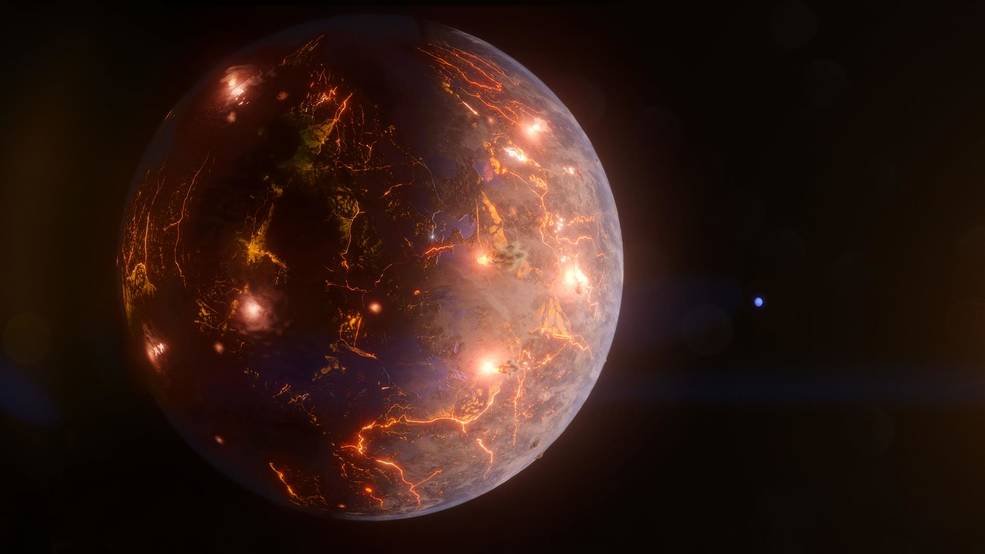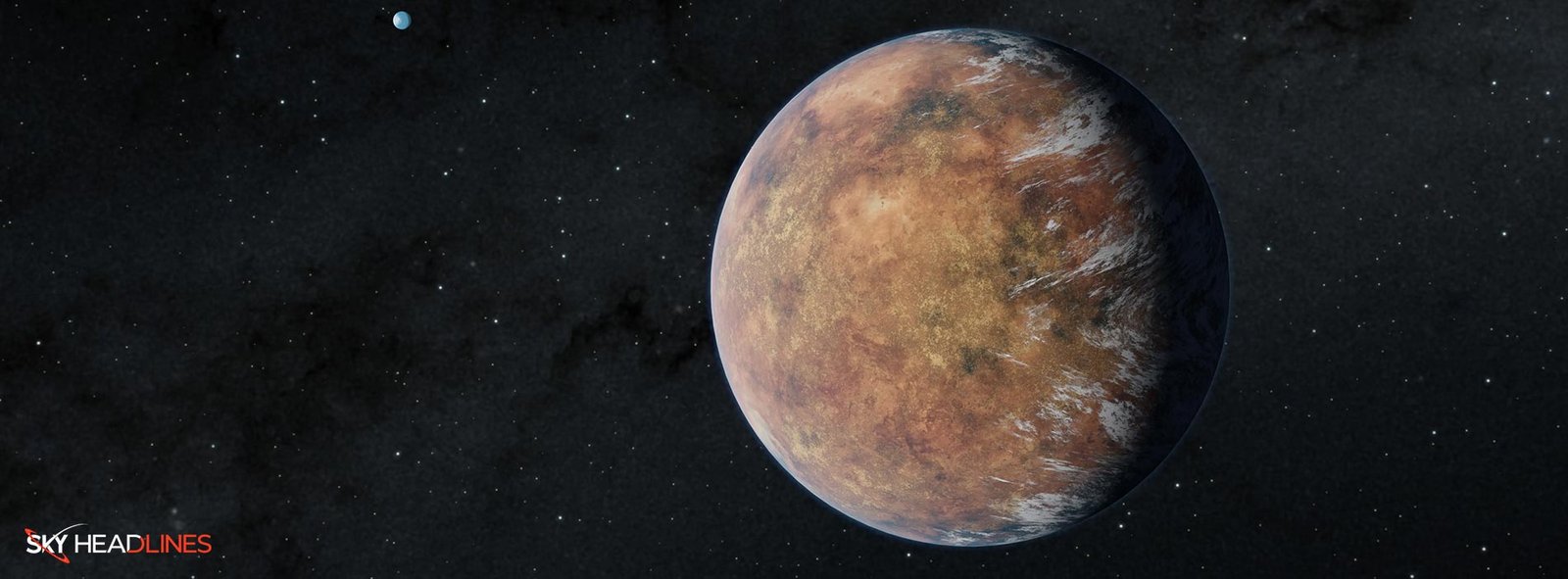Astronomers have identified an Earth-size exoplanet, or globe outside our solar system, that may be covered in volcanoes. The planet, known as LP 791-18 d, may have volcanic outbursts as frequently as Jupiter’s moon Io, our solar system’s most volcanically active body. NASA’s TESS, Spitzer Space Telescope, and an array of ground-based observatories were used to find and study the planet.

A report published on May 17:
A report describing the planet, led by Merrin Peterson, a graduate of the Trottier Institute for Research on Exoplanets (iREx) at the University of Montreal, was published in the scientific journal Nature on May 17.
Björn Benneke:
“LP 791-18 d is tidally locked, which means the same side always faces its star,” explained Björn Benneke, co-author and iREx astronomy professor who designed and supervised the project. “The day side is likely to be too hot for liquid water to exist on the surface.” However, the amount of volcanic activity that we suspect occurs all across the planet may be enough to sustain an atmosphere, allowing water to condense on the night side.”
LP 791-18 d:
LP 791-18 d circles a small red dwarf star in the southern constellation Crater, which is roughly 90 light-years away. According to the team, it is only slightly larger and heavier than Earth.
How does the size and weight of LP 791-18 d compare to the other planets in the system?
Prior to this discovery, astronomers were aware of two more worlds in the system known as LP 791-18 b and c. The inner planet b is around 20% the size of Earth. The outer planet c is around 2.5 times the size of Earth and weighs more than seven times as much.
What is the effect of the close passes of planet c on the planet d’s orbit and surface?
Planets d and c pass close to one other during each orbit. Each close pass by the more massive planet c causes a gravitational tug on planet d, causing its orbit to become slightly elliptical. Planet d is significantly distorted as it orbits the star on this elliptical course. These deformations have the potential to generate enough internal friction to significantly heat the planet’s innards and spark volcanic activity on its surface. Jupiter and some of its moons have similar effects on Io.
Where is planet d located in relation to the habitable zone?
Planet d is located on the outside of the habitable zone, which is the typical range of distances from a star at which astronomers believe liquid water may exist on the planet’s surface. If the planet is as geologically active as the researchers believe, it may be able to support life. Temperatures on the planet’s night side may fall low enough for water to condense on the surface.
James Webb Space Telescope observation:
Planet c has already been cleared for James Webb Space Telescope observing time, and the team believes planet d is an excellent candidate for atmosphere investigations by the mission.
Jessie Christiansen:
“A big question in astrobiology, the broad study of the origins of life on Earth and beyond, is whether tectonic or volcanic activity is required for life,” said co-author Jessie Christiansen, a research scientist at NASA’s Exoplanet Science Institute at the California Institute of Technology in Pasadena. “In addition to potentially providing an atmosphere, these processes could churn up materials that would otherwise sink and become trapped in the crust, including those we believe are essential for life, such as carbon.”
Spitzer Observation:
Spitzer’s observations of the system were among the last data points collected by the satellite before it was retired in January 2020.
Joseph Hunt:
“It’s incredible to read about the continued discoveries and publications years after Spitzer’s mission concluded,” said Joseph Hunt, Spitzer project manager at NASA’s Jet Propulsion Laboratory in Southern California. “This demonstrates the accomplishments of our world-class engineers and scientists.” They collaborated to build not only a spacecraft but also a data set that is still useful to the astrophysics community.”
Who are the collaborators and partners involved in the TESS mission?
TESS is a NASA Astrophysics Explorer mission led and administered by MIT in Cambridge, Massachusetts. Northrop Grumman in Falls Church, Virginia; NASA’s Ames Research Center in California’s Silicon Valley; the Center for Astrophysics | Harvard & Smithsonian in Cambridge, Massachusetts; MIT’s Lincoln Laboratory; and the Space Telescope Science Institute in Baltimore are among the other collaborators. The mission includes more than a dozen colleges, research institutes, and observatories from around the world.
Where is the Spitzer data archive located and who oversees it?
The Spitzer data archive, which is kept at the Infrared Science Archive at IPAC at Caltech in Pasadena, California, houses the whole body of scientific data produced by Spitzer during its existence. Spitzer mission operations were overseen for NASA’s Science Mission Directorate in Washington by Caltech’s Jet Propulsion Laboratory. The Spitzer Science Center at IPAC at Caltech was the site of the science operations. Lockheed Martin Space in Littleton, Colorado was responsible for spacecraft operations.





